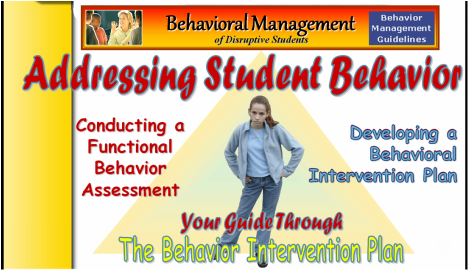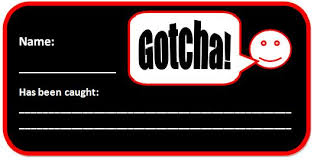Response-Cost Lottery Behavioral Strategy

Definition/Description:
Response Cost Lottery can be used for individual students, small groups, or whole group. The main purpose of this strategy is to increase the frequency of desired targeted behaviors. (Intervention Central, 2015). To start this strategy the teacher or class needs to develop a reward “menu”, which is the rewards students can receive if they do well. The teacher selects 1-3 behaviors need focus on to reduce for a specific student, or the class. Teacher needs to choose a time in which to implement this strategy at first. As the strategy foes on the time can increase but when just starting it should be about 15-minutes for whole class as well as for an individual. This is because you want to be able to monitor effectively student(s) during that allowed time. Need to be clear about what the possible number of points that can be rewarded. Student(s) then write name on paper for whole class or for individual you can do they have to reach x number. Choose a time for the “drawing” make sure that students know when it will be. For example, every week, every month, end of term, or end of day. Just make sure to let them know ahead of time (Intervention Central, 2015).
Response Cost Lottery can be used for individual students, small groups, or whole group. The main purpose of this strategy is to increase the frequency of desired targeted behaviors. (Intervention Central, 2015). To start this strategy the teacher or class needs to develop a reward “menu”, which is the rewards students can receive if they do well. The teacher selects 1-3 behaviors need focus on to reduce for a specific student, or the class. Teacher needs to choose a time in which to implement this strategy at first. As the strategy foes on the time can increase but when just starting it should be about 15-minutes for whole class as well as for an individual. This is because you want to be able to monitor effectively student(s) during that allowed time. Need to be clear about what the possible number of points that can be rewarded. Student(s) then write name on paper for whole class or for individual you can do they have to reach x number. Choose a time for the “drawing” make sure that students know when it will be. For example, every week, every month, end of term, or end of day. Just make sure to let them know ahead of time (Intervention Central, 2015).
|
Justification:
I know that Witt and Elliott's research is old, however I believe it is still valid and supports this strategy well. They evaluated the effect of the response cost lottery strategy on three fourth-grade students. It looked at the percentage of on-task behavior and accuracy of academic work within these three students. Overall, their research showed that this strategy allowed students to manage their behavior and helped them work towards something they wanted. (Witt and Elliott, 1982). Students who have behavioral problems often have a hard time identify and creating friends. "Their most obvious problem is failure to establish close and satisfying emotional ties with other people who can help them" (Hallahan, Kauffman, and Pullen, 2015). This strategy allows student to be part of the whole class and an award could be something they can do with the teacher or a classmate they would like to become friends with. Students with a behavioral disability need to self-monitor and self-regulate. "A balance of behavioral control and academic instruction is requires" for student with emotional and or behavioral disorders (Hallahan, Kauffman, and Pullen, 2015). This strategy allows a general education teacher to monitor all her student especially those with behavioral disorders. The video to the left discusses and demonstrates the importance of implementing a strategy before hand so behavior is monitored and students know what is expect. We need to be proactive in behavioral management, The video also states the importance about self-management skill!
|
The video above discusses everything a teacher needs to do and know about Behavior Management. It focuses on early education, but it really focuses on what teacher need to create and design a behavioral plan.
Who would this strategy work for?
This strategy works for all students, but especially students with EBD Emotional behavioral disorder, which is now being called ED emotional disturbance. Also, some student with Autism Spectrum Disorder also seal with behaviors so this would be an effective strategy for the. Students with Autism often need behavioral management, they "sometimes display highly inappropriate behaviors, such as biting, hitting, or screaming"(Hallahan, Kauffman, and Pullen, 2015). Therefore this would also help them, because they would need to self-direct to stay "cool" and be able to enter the lottery! |
|
Examples of Some Rewards for Individual Students and or Groups:
|
Individual Student:
|
|
This is an example of a ticket that can be used!
Below is a video link about managing and improving behavior in inclusive educational environments. The man in the video is Dr. Edward Sabornie and he specializes in behavioral issues. the video illustrates a variety of appropriate as well as inappropriate behaviors by students and teachers. Watch the video and see why this strategy will effectively help students and teacher with behavioral implementation.
|
Steps:
|
Since this is a behavior management strategy, it will work for all content areas and it will be the same throughout. It is a strategy to help with classroom behavior and specifically help those student who may have a hard time behaving and focusing, possibly due to a disability.
References:
Everything you Need to Know About Behavior Management (2009). [Web video]. Retrieved from https://www.youtube.com/watch?v=onawvFuY_So
Hallahan, D. P., Kauffman, J. M., & Pullen, P. C. (2015). Exceptional learners: An introduction to special education. Boston, MA: Pearson/Allyn & Bacon.
Response-Cost Lottery (2015). Intervention Central. Retrieved from http://www.interventioncentral.org/behavioral-interventions/challenging-students/problem-student-behaviors
Sabornie, E., (2009).Managing and improving behavior in inclusive educational environments. [Web video]. Retrieved form http://www.learnnc.org/lp/editions/every-learner/6691
Witt, J. C., & Elliott, S.N. (1982). The response cost lottery: A time efficient and effective classroom intervention. School Psychology Review, 20, 155-161.
Everything you Need to Know About Behavior Management (2009). [Web video]. Retrieved from https://www.youtube.com/watch?v=onawvFuY_So
Hallahan, D. P., Kauffman, J. M., & Pullen, P. C. (2015). Exceptional learners: An introduction to special education. Boston, MA: Pearson/Allyn & Bacon.
Response-Cost Lottery (2015). Intervention Central. Retrieved from http://www.interventioncentral.org/behavioral-interventions/challenging-students/problem-student-behaviors
Sabornie, E., (2009).Managing and improving behavior in inclusive educational environments. [Web video]. Retrieved form http://www.learnnc.org/lp/editions/every-learner/6691
Witt, J. C., & Elliott, S.N. (1982). The response cost lottery: A time efficient and effective classroom intervention. School Psychology Review, 20, 155-161.

